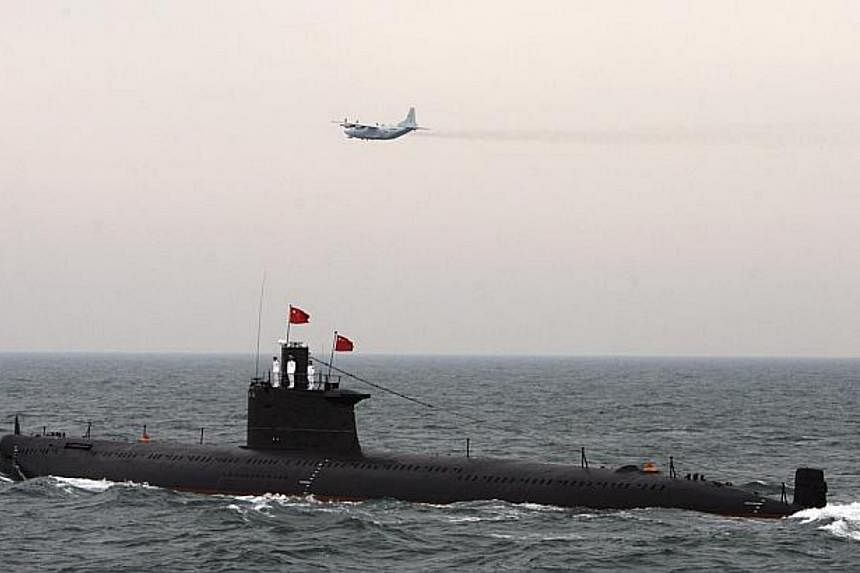A submarine that can cross the Pacific in two hours? That is improbable, experts here said on Wednesday, commenting on a South China Morning Post report on so-called supersonic submarine technology developed by China.
The submarine would work by supercavitation, creating an air bubble around the submarine to reduce drag caused by water. According to the story, the vessel's exterior would be sprayed with a liquid membrane that reduces water drag and allows it to increase its speed up to 75kmh or more, at which it is able to enter the state of supercavitation, while the liquid membrane can be used to steer the vessel by creating different levels of friction on different parts of the ship. In theory, the report said, a submarine could hit speeds of 5,800kmh. The Hong Kong-based paper's story was published in The Straits Times on Monday.
While supercavitation is an established concept, said experts, having a submarine travel through water at the speed of sound in water is a bigger stretch. Professor Khoo Boo Cheong, director of defence research institute Temasek Laboratories, said supercavitation works by creating an air bubble around the submerged body, which cuts drag caused by water. "It's like waving your hand in air versus water. In air, the resistance is much less; in water, the resistance is tremendous," he noted.
Sources: Defence Update, Popular Science, South China Morning Post. Graphic: Tobey - The Washington Post
While steering such a vessel might be possible by controlling where supercavitation starts and ends, "if (the new technology) was reported in a scientific paper, there would be much greater certainty," he said.
Dr Dimitrios Konovessis, senior lecturer at Nanyang Technological University's mechanical and aerospace engineering school, said: "The larger the body, the more difficult it would be to create the bubble around it.
"For example, the US Defence Advanced Research Projects Agency (Darpa) worked on the development of a 100-foot-long (30.5m) submarine, and based on tests conducted on a scaled model in 2009, it claimed it could achieve only 100 knots (185.2kmh) in full scale."
Both Chinese and American media have come out to dispel claims in the original South China Morning Post report.
The report had on Sunday quoted Harbin Institute of Technology professor Li Fengchen, who is reportedly part of a team of scientists developing new technology to enhance high-speed underwater travel, as saying about the breakthrough: "We are very excited by its potential."
But when contacted via e-mail by Chinese daily Global Times, the professor said he had nothing to do with the speculation in the SCMP report, state media Xinhua News reported.
Meanwhile, US-based Time.com has also refuted the claims with an article headlined, China's Supersonic Submarine? Not Gonna Happen.
It cited US Naval Institute physicist and naval weapons expert Norman Friedman as saying that even the most famous supercavitating torpedo - the Russian Shkval - is capable of travelling only up to 200 knots or 370kmh, and there are insurmountable challenges to increase that speed.
"The idea that any Chinese research association would talk about its best ideas is ludicrous beyond words," he told Time.com.
The South China Morning Post, however, told The Straits Times it stands by its report and plans to follow up with more details later.

